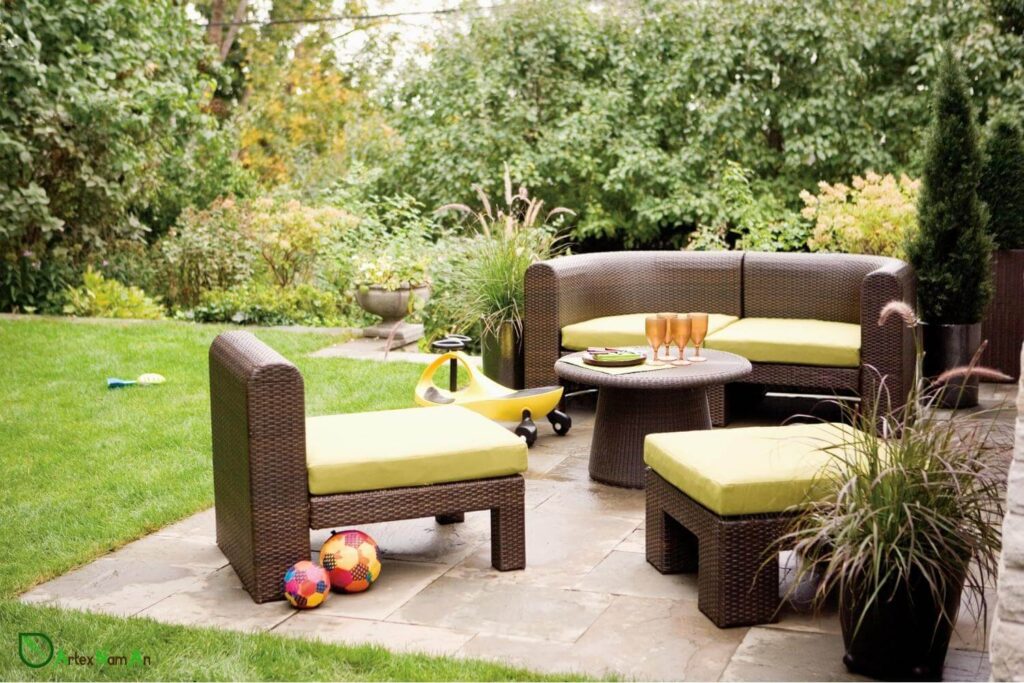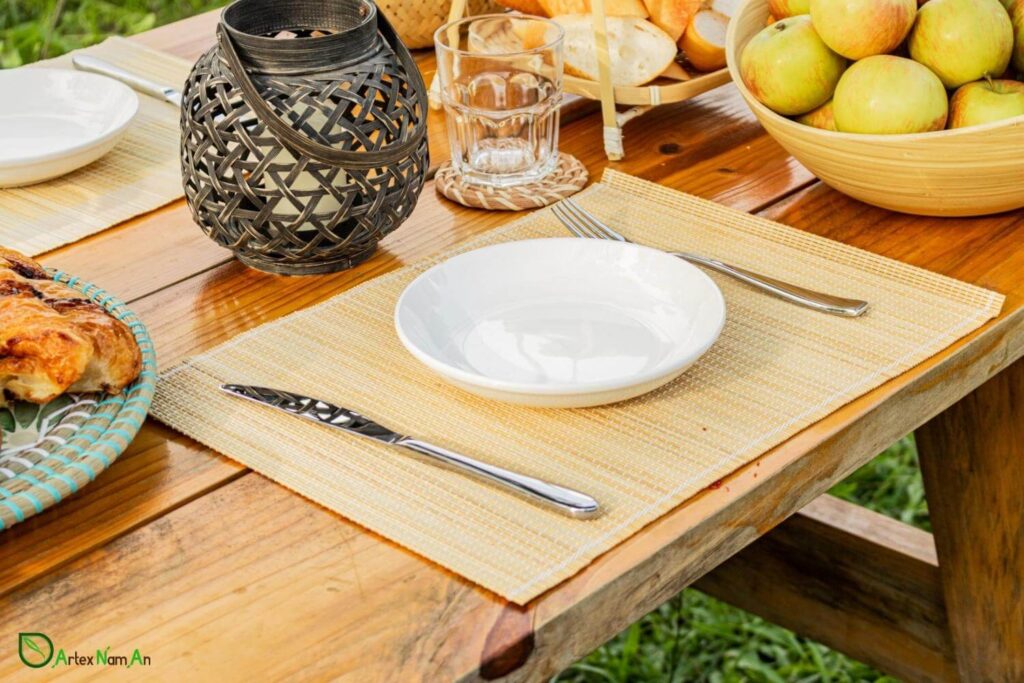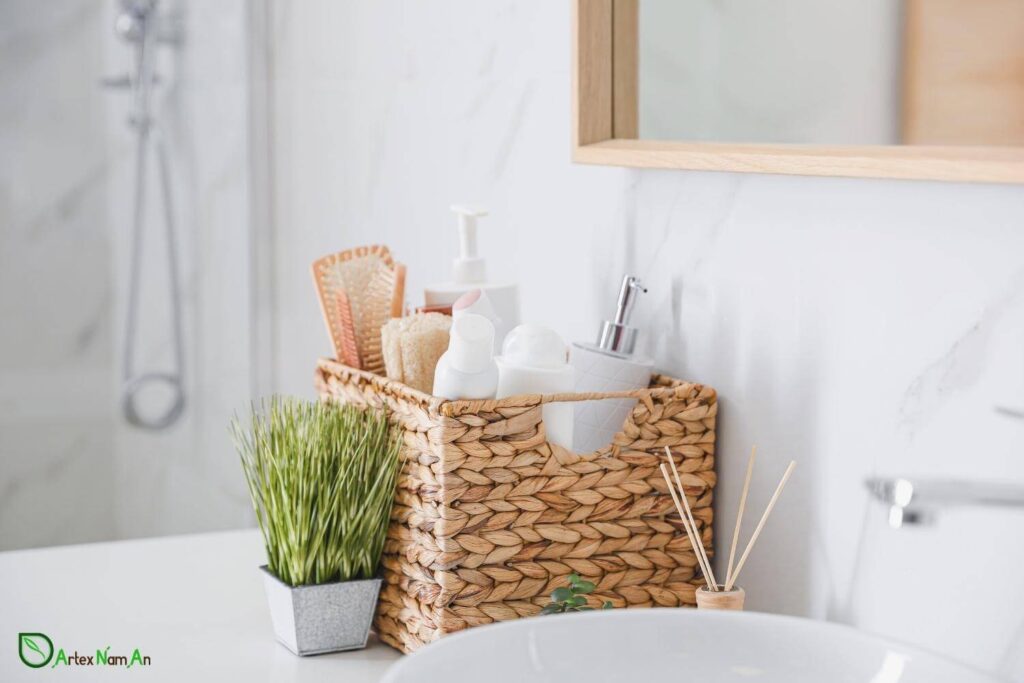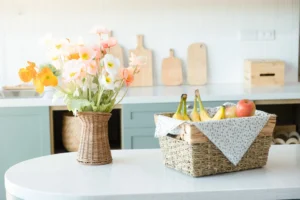Wicker is considered a timeless weaving technique which can create a wide range of durable homewares products for indoor and outdoor spaces. This blog will provide you insights about two types of wicker, and how they apply into different corners. Have a read!
What is Wicker?
The term “wicker” describes a technique of weaving to create furniture and homewares, dating as far back as 5,000 years ago. The use of flexible plants like rattan and marsh grasses was first observed in ancient Egypt, but in current times, people make use of other malleable plants such as seagrass, water hyacinth, corn husk for natural wicker products.

Today, wicker is probably among the primary choices for indoor and outdoor decoration. Wicker not only looks good with its natural color palette, but it can also create vibrant shades, from basic sun-inspired décor to ocean breezes.
Aside from handcrafted in Vietnam furniture, wicker is now put into use for both decor and storage like wicker baskets bulk. Wicker has also been widely applied in a broad assortment in the home industry. Some popular products such as wicker hamper basket, wicker mirror round, wicker pots for plants, and wicker tray decor can be found in the bedroom, kitchen, living room, patios, and other outside spaces.
What is Wicker Made Of?
Natural wicker is traditionally made from plant origin. It can be weaved with bamboo, rattan, seagrass, water hyacinth and many diverse natural plants. Meanwhile, outdoor wicker (all-weather wicker) is produced from synthetic fibers like Resin and Vinyl, with a uniform aesthetic impression. The man-made materials, when combined with aluminum frames, do not corrode and are simple to store and preserve when not in use.

Differences between Natural vs Outdoor Wicker
Obviously, the properties of natural wicker don’t suit outdoor use, especially in case of dampness, rain, snow, and other types of bad weather. Therefore, natural wicker products shouldn’t be exposed to direct sunlight and should be kept out of damp, high-humidity areas. Otherwise, they will lose their original color, become moldy, or get excessively dry, brittle, and break.
In contrast, synthetic resin wicker (outdoor wicker) can be utilized both inside and outside the home. Outdoor wicker closely resembles traditional wicker (such as rattan or willow) in appearance and maintains best features such as durability and flexibility. Synthetic wicker is immune to external elements as it is extremely robust, moisture-resistant, and resistant to fading, staining, and cracking. Additionally, synthetic wicker is less expensive and easier to clean than natural wicker.

| Natural Wicker | Outdoor Wicker | |
| Definition | a weaving technique using natural pliable materials to manufacture homewares and furniture | a type of weaving using synthetic, plastic fibers to manufacture outdoor homewares and furniture |
| Materials | seagrass, water hyacinth, bamboo, rattan, corn husk, banana leaf/bark, etc. | HDPE, PVC |
| Appearance | having a earthy color; soft, rustic texture; | having a similar look to rattan; different colors. |
| Properties | – Advantages: eco-friendly, relatively durable, visually appealing; – Disadvantages: subject to mold, affected by inclement weather; careful preservation. | – Advantages: extremely durable, moisture-resistant, little to no maintenance; – Disadvantages: limited textures, not as good-looking as natural wicker. |
| Applications | Mainly indoor use: large wicker baskets, trays, indoor planters, lights and lamp shades, pet beds, etc. | Mainly outdoor use: wicker patio furniture, tablewares, chairs & table, and outdoor portable lanterns, daybed, dining set, etc. |
Is Rattan and Wicker the same thing?
Many people mistakenly think that rattan and wicker are the same thing but in fact, they are two different things. Rattan is a natural material for making homewares and home goods wholesale. However, wicker is actually a type of weaving or a process for making household items out of pliable plants. Let’s learn more details about Differences between Rattan vs Wicker.
Is Wicker Eco-friendly?
Yes, natural wicker is. This type of wicker is typically made from rapidly renewable, biodegradable plants. A common water hyacinth, for instance, can double in size in just five to fifteen days, making it one of the fastest-growing plants in the world. Water hyacinth and many other materials for natural wicker can grow without the use of pesticides, which helps reduce carbon footprint or environmental impacts.

What Material is Outdoor Wicker?
PE wicker and PVC wicker are typical materials for outdoor wicker. PE stands for polyethylene, and PVC is polyvinyl chloride, both of which are high-molecular polymers.
Two Main Materials
In today’s home furnishings, according to Leisure Touch Rattan, 90% of outdoor wicker for weaving is made of HDPE (high density polyethylene), an upgraded polymer with excellent performance. HDPE is a thermoplastic resin created through ethylene polymerization. The substance HDPE has a light-specific gravity and is opaque white in color.
PVC is an amorphous substance that typically takes the shape of a white resin or a light yellow powder. It cannot be utilized independently, thus it must first be adjusted before it can be used. During the production of wicker with the use of PVC material, stabilizers, lubricants, auxiliary processing aids, colors, reinforcing agents, and other additives are frequently used.

These materials are often processed into uniform flat, oval strands, and these are woven over iron frames into furniture and other products. In the weaving, the strands are moved horizontally in an over-under pattern between vertical spokes to achieve a durable piece. Synthetic wicker is available in a variety of colors.
Comparison: HDPE vs PVC
Although both HDPE and PVC are plastic, they differ in hardness, transparency, applicability, strength, etc. When used for outdoor furniture, HDPE wicker is more durable than PVC wicker due to its increased strength. The quality of HDPE is not influenced by changes in temperature and other weather conditions, so HDPE wicker products may be placed outside year-round without experiencing any issues.
Furthermore, HDPE wicker has increased moisture resistance without doing harm to human health. Last but not least, HDPE wicker rattan has a more elegant and natural appearance than PVC wicker. As a result, HDPE wicker and rattan are becoming more and more common in the outdoor furniture sector.

Will Wicker Last Outside?
As mentioned before, outdoor wicker is invulnerable to the inclement environment. As regard to synthetic wickers, UV light poses no problem; their function can last long even when exposed to outdoors 24/7. Not only patio furniture, all-weather wicker has been used in various products for outdoor spaces, including planters, lampshades, lanterns, birdhouses, and garden decor items.
Meanwhile, natural wicker is susceptible to moisture and UV damage. The impacts of continual UV exposure and moisture retention first appear as faded colors, damaged surfaces, and straining on products. There are still several natural wicker products which can be used for outdoor decor such as party tablewares, patio chairs, and portable lanterns. Be sure that your customers use natural wicker for porches, patios, balconies, and sheltered gardens, and keep it out of intense sun heat and direct rain at all times.

Can Wicker get Wet?
The response depends on the type of wicker itself. All-weather wicker doesn’t actually get affected when exposed to water. This wonderful property has made outdoor wicker a favorite material in every home use. On the other hand, natural wicker can be adversely impacted by high humidity, especially soft, fibrous plants such as seagrass and water hyacinth. In case natural wicker is soaking wet, it is best to dry it out as quickly and thoroughly as you can to avoid mold and damage like crack or losing its original shape.
Why does Wicker go Moldy?
Although natural wicker has many outstanding advantages, it is highly susceptible to mold due to the hygroscopic properties. Even natural wicker products are already dried and processed properly, mold on wicker basket still can appear over time if maintained in a moist or humid atmosphere. These microorganisms will leave stains and unpleasant odors on homewares and furniture.

Mold removal from wicker furniture can be accomplished with either ammonia or bleach. To clean the furniture of any loose dirt, use a feather duster. Then, use a soft-bristled brush dipped in a mixture of 50% water and 50% bleach to scrub all affected areas to remove mold. If you choose to use ammonia, mix two tablespoons of it with one gallon of water to create a cleaning solution.
After that, apply the solution by using the spray method or the wet cloth approach. Do not forget to scrub it with a fresh, damp sponge. Finally, be sure to let the wicker furniture air dry in a shaded, non-humid part of the yard.
How Do You Maintain Wicker?
If you want to extend the life cycle of natural wicker homewares and furniture, you should follow the careful preservation required, even if these natural wicker products are designed to stay inside. Be careful to keep natural wicker homewares and furniture clean by removing as much surface dust as you can with a vacuum or a brush.
In case that these products have stubborn stains or mold, we recommend that you use a soft brush and water that has been soapy-added with one or two tablespoons of ammonia, and then wash the wicker. Rinse the items thoroughly and allow it to air dry in the sun. To clean hard-to-reach areas, you can also use a soft toothbrush. Your wicker furniture should stay quite spotless if you incorporate this vacuuming and dusting into your normal cleaning routine. Additionally, periodic touch-ups with a fresh coat of paint or replacing frayed strands helps keep it looking good.

Outdoor wicker might be a perfect material for those who detest maintenance schedules and expensive cleaners. When wicker furniture is dust-covered, you just need to gently wipe it with a soft brush and the product will look like new again. What if it becomes stained? Gently wipe it away with a little warm water. Unlike natural rattan or iron outdoor furniture, the products does not corrode or generate mold.
Conclusion
Traditional or natural wicker cannot be used outdoors for extended periods of time, however, all-weather wicker can. Both two types of wicker have different appearance, distinctive properties and suitable applications, just consider the categories you plan to buy first and then materials!





You may also be interested in
3 Natural Materials For Wicker Laundry Hampers Wholesale In Vietnam
Read more...Mar
Seagrass Material: 3 Highlights About Handicraft Production Process
Read more...Dec
Rattan vs Wicker – What’s The Sharp Difference?
Read more...May
Overwhelmed by the Many Global Fairs? Navigating the 2026 Handicraft Trade Show Calendar
Laminated Bamboo: Ideal To Make Bamboo Trays For Eating
Read more...Oct
Rattan vs Wicker, Cane, Willow: Here is the difference between 4 popular terms
Read more...Nov